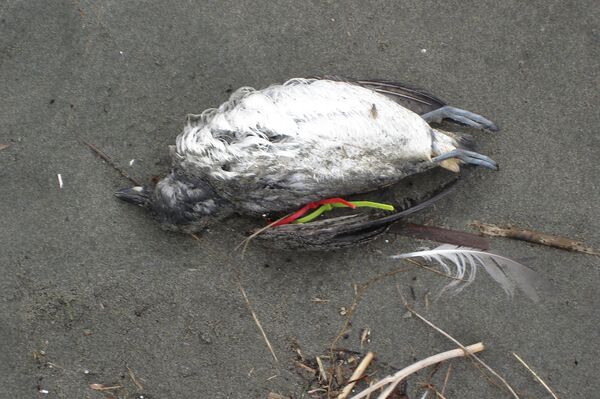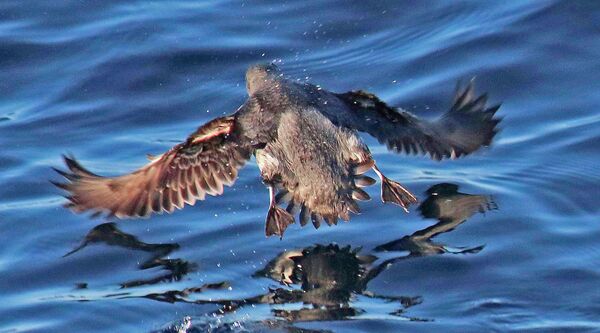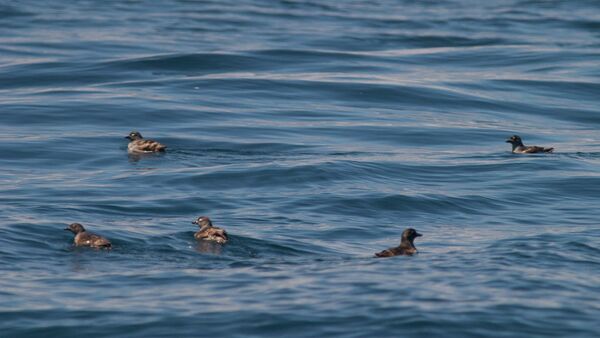Cassin’s auklets, named after businessman and naturalist John Cassin, are small diving birds, averaging about ten inches long and weighing about seven ounces, that mostly feed on plankton. As National Geographic describes, they look like small puffballs.
The species’ total population, from the Baja Peninsula to Alaska, is between 1 and 3.5 million, according to a report by the magazine. But starting in late October, thousands of juvenile auklets started to wash ashore from California’s Farralon Islands to Queen Charlotte Islands of British Columbia.

"This is just massive, massive, unprecedented," said Julia Parrish, a seabird ecologist from the University of Washington who oversees the Coastal Observation and Seabird Survey Team (COASST), a program that has tracked West Coast seabird deaths for almost two decades. "We may be talking about 50,000 to 100,000 deaths. So far."
The mass auklet deaths are just part of what researchers are identifying as an enormous rise in the mortality of marine life worldwide. For the last two years sea stars have been subject to the gastrointestinal disease parvo, causing them to melt. Scientists initially suspected a link between sea star die-outs and the auklets, given that the two species share territory and food sources.
But organizations like the U.S. Geological Survey have performed animal autopsies, or necropsies, on several of the Cassin's auklets, and have found no evidence of disease or trauma. The birds appear instead to have starved to death.

"There's very little evidence of food in their GI tracts or stomachs," said Anne Ballmann, with USGS's National Wildlife Health Center.
Some scientists aren’t at all surprised at the huge auklet death toll, as last summer they observed a huge upswing in birth rates. When auklets begin to fledge they compete for the same resources as adult populations. In other words, bird birth booms are often accompanied by massive die-offs.
"You get some of this with seabirds every year," said David Nuzum, of the Oregon Department of Fish and Wildlife. "You get so many juveniles out there, and they've got this steep learning curve for feeding after being separated from their parents, so you always get a die-off in winter. But I've never seen anything like this, ever, and I've been here since 1985."
No recent seabird die-off observed by the USGS since 1980 has even come close to the current one, with previous numbers topping out at under 11,000.
Some experts are suggesting changes in water could be to blame for the auklets’ fate. Bill Sydeman of the Farallon Institute believes a massive blob of warm water that heated the North Pacific is the most likely culprit. The blob contributed to California’s current drought and to 2014 being the hottest year recorded. It’s also made the marine environment less favorable for the flora and fauna that live there.

If the plankton that makes up the auklets’ diet was unable to flourish as usual, the auklets would in turn fail to thrive.
What is puzzling is that only the auklets seem to be dying out at an observably faster rate, while other animals with similar relationships to the food chain are not..
"That's the thing that's so puzzling to us—we're just not seeing this with common murres or anything else," Parrish said.
Sydeman predicts a kind of domino effect could be possible, wherein the dying might spread to the salmon and other fish that eat the same plankton species, and then to other birds that, in turn, eat those fish.
"I think there's a strong possibility of it escalating to affect other species in the near future," he said.


